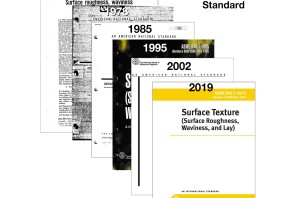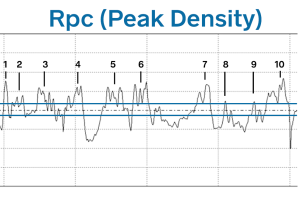Welcome to the Surface Roughness Analysis Blog
Why do brakes squeak? When will a gasket leak? What caused the haziness in my painted finish?
Surface texture and function are tightly linked. Understanding the relationship between texture and function, and sharing that information with engineers and quality professionals, is what Michigan Metrology is all about.
The articles in this blog explore the concepts of surface texture analysis and measurement. We show how you can apply these concepts to solve problems related to leaks, squeaks, appearance, wear, noise, fit, friction, vibration, adhesion, and many other functions.
Looking for more information on specific surface texture parameters? Visit our Surface Texture Parameters Glossary for an introduction to dozens of 3D surface roughness analysis parameters.
And, if you want to learn much more about surface texture consider attending our online and in-person classes for an immersive introduction to the many concepts in surface analysis.

Capillarity and Wetting Phenomena: Drops, Bubbles, Pearls, Waves
December 12, 2022Pierre-Gilles de Gennes, Françoise Brochard-Wyart, David Quéré, 2003 When I started the Surface Roughness, Texture and Tribology class some 20 years ago I searched for good descriptions of the physics

Ratio Parameters (Spk/Sk, Svk/Sk, Spk/Svk)
November 30, 2022Tracking the ratio of several bearing ratio parameters can provide information about the symmetry of the surface texture, which can sometimes be more important than the amplitudes of the peaks

Remembering Benoit Mandelbrot
November 16, 2022Benoit Mandelbrot, whose birthday we commemorate on November 20, found commonality in the math that describes patterns and distributions in nature and modern life. Mandelbrot saw order in phenomena that

What is ASME B46.1?
November 8, 2022The American Society of Mechanical Engineers’ ASME B46.1 standard defines surface roughness, waviness, and lay, as well as parameters for specifying and controlling surface texture. Learn what it covers and

What do you do if you don’t know the cutoff length?
November 1, 2022Cutoffs define the band of spatial wavelengths that will be included in the calculation of surface texture parameters. Per specifications, the cutoffs must be specified. So, what do you do

Advanced Engineering Design: Lifetime Performance and Reliability
October 25, 2022In my office I have dozens of books that I consider primary engineering texts. But there are a few that I consider essential. Anton van Beek’s Advanced Engineering Design is

Sa does not equal Ra!
October 18, 2022Download this article as a PDF Ra, the roughness average (or average roughness), is the average of the surface heights along a measurement trace. Sa is the average roughness over

Why does paint appear glossy or matte?
October 5, 2022Some paint finishes are purposefully glossy or shiny. Others appear matte, or dull, or hazy. So, what leads to the difference…and what do all these terms really mean? Texture scatters

The scale of interaction
September 27, 2022I live in a world that is 1 mm x 1mm, and often less than 20µm high. It’s amazing, all of the physics that goes on in such a tiny

Why are “incompatible” surfaces better for sliding friction?
September 19, 2022Key concepts in tribology have often been discovered by trial and error…then made more broadly useful through rigorous work that uncovers the broader understanding. Such is the case of material

A little tribology every morning
September 13, 2022Years ago, I’d just completed one of my first major surface roughness measurement projects, and I was considering my next steps to form an actual business. I thought that I

Parameters Primer: Rpc, or Stylus (X,Y) Pc
September 6, 2022Rpc is the Peak Density in the X or Y direction of surface texture data. It is a measure of the number of peaks per unit length (i.e., peaks/mm) in
